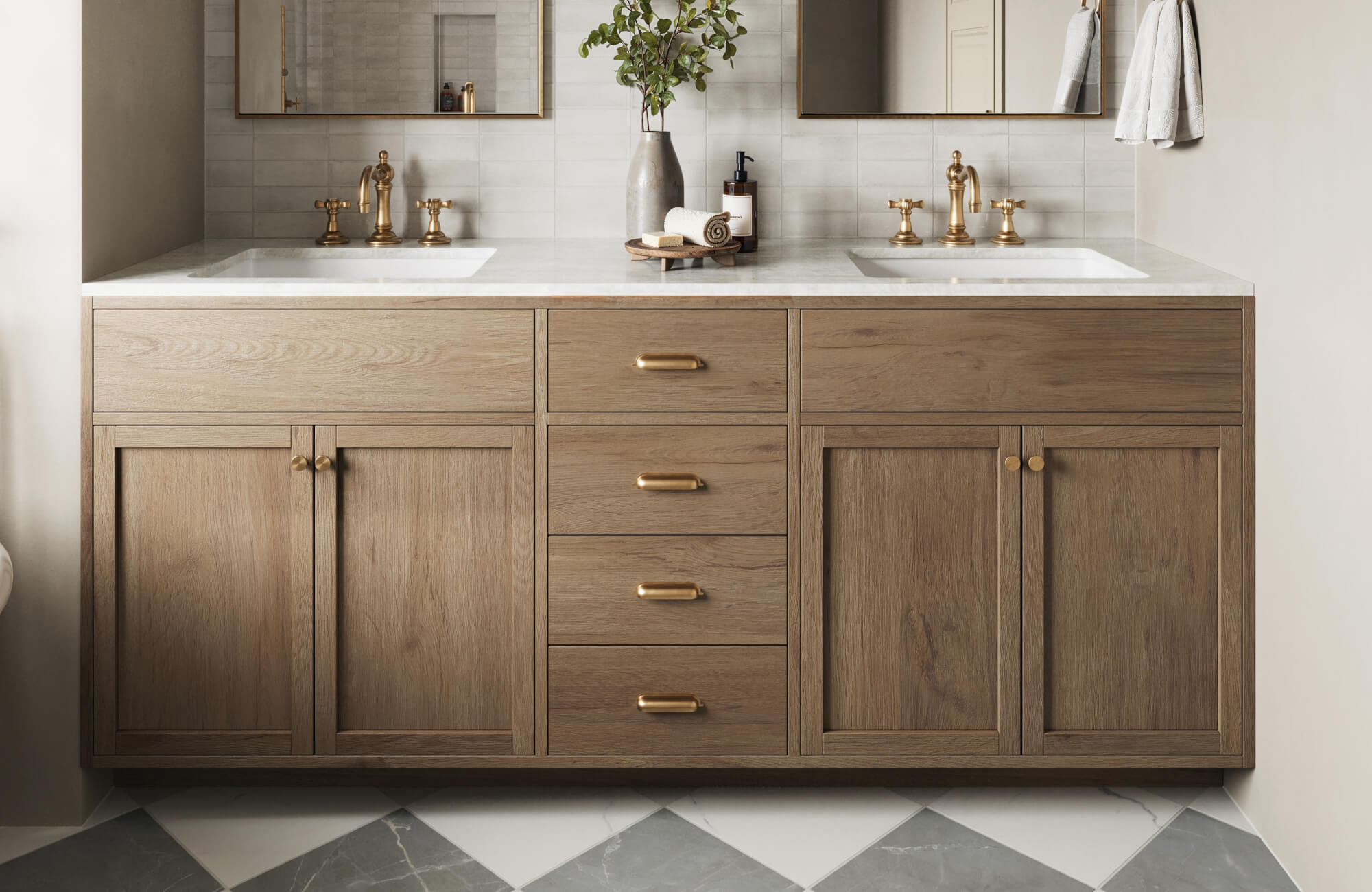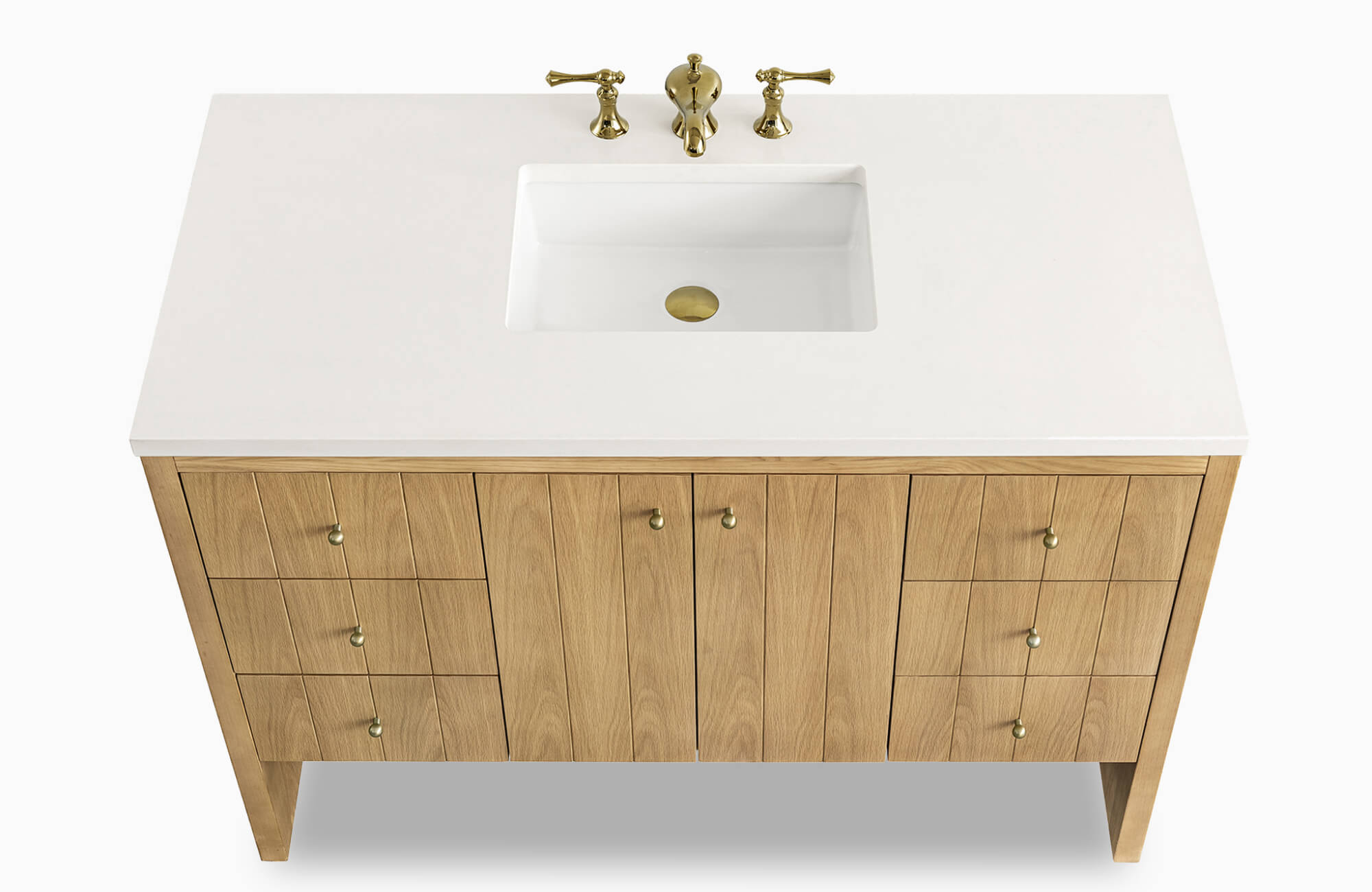In the ever-evolving landscape of interior design, black ceramic tiles have emerged as a striking and increasingly popular choice for bathrooms. Moving beyond the traditional white or neutral palettes, designers and homeowners are embracing the dramatic impact that dark tiles can create. However, the prospect of incorporating black can feel bold, even risky, for some, raising concerns about making a space feel too dark or small. Yet, when executed thoughtfully, black ceramic tiles can transform a bathroom into a sophisticated, luxurious, and stylish sanctuary. This raises an important consideration for anyone contemplating a bathroom renovation: Are black ceramic tiles a practical and visually appealing choice for bathrooms? This article explores their aesthetic versatility, functional benefits, and key design considerations to help you decide if this bold option aligns with your vision.
Visual Impact and Style Benefits
Black ceramic tiles offer significant visual impact and distinct style advantages, contributing to bathrooms that feel refined and intentional.
Creating Bold and Sophisticated Spaces
Using black ceramic tiles immediately introduces a sense of drama and elegance. Rather than acting merely as a dark background, black becomes a defining feature that enhances a space’s architectural presence. Whether in industrial settings with exposed materials or in glamorous bathrooms featuring gold fixtures and marble accents, black tiles establish a high-end, curated look. Even in minimalist designs, they lend an understated cool that elevates the overall aesthetic.
Enhancing Contrast and Depth
Black ceramic tiles are excellent for emphasizing contrast, which helps create visual depth. When paired with lighter materials, such as white bathtubs, vanities, or tilework, the contrast adds clarity and visual interest. Our Mikayla 2.5x5 Glossy Ceramic Tile in Espresso, shown in the photo above, exemplifies this beautifully—its rich, glossy surface elevates the drama when juxtaposed with pale neutrals, making every detail feel intentional. Metallic finishes like chrome or brass stand out sharply against black, gaining a more polished presence. Similarly, wood tones benefit from the warmth and balance that black tile provides, enhancing the texture and richness of natural finishes.
Framing Features and Fixtures
When used selectively, black tiles can frame important features and guide the eye toward focal points. For example, placing black ceramic tiles behind a freestanding tub or around a vanity creates a dramatic backdrop that enhances the feature’s prominence. This technique helps define zones in the bathroom and adds a sense of design intention.

Functionality in Real-World Bathrooms
Beyond aesthetics, black ceramic tiles offer practical benefits that make them well-suited for everyday use in the bathroom.
Moisture and Humidity Resistance
Ceramic tiles are non-porous and naturally resistant to water, making them ideal for high-humidity environments like bathrooms. Proper installation and sealed grout lines create an impermeable barrier that helps prevent mold, mildew, and long-term water damage. This makes black ceramic tiles a durable and hygienic choice for showers, floors, and walls.
Heat and Slip Resistance
Ceramic tiles conduct heat efficiently, making them compatible with underfloor heating systems that enhance comfort. In wet areas, finishes such as matte or textured surfaces offer increased traction to reduce slips and falls. Unlike glossy surfaces, which can become slippery when wet, textured black ceramic provides a more secure footing, helping create a safer bathroom environment. However, because ceramic is less impact-resistant than materials like porcelain, it’s better suited for walls or areas with moderate use. For lasting performance, black ceramic tiles are especially effective in vertical applications such as shower walls or feature panels, where they can offer both safety and style with minimal wear.
Durability Over Time
Ceramic tiles hold up well in everyday settings, especially when used in applications with limited physical stress. While they can be installed on floors, their slightly more brittle composition makes them more prone to chipping under heavy impact compared to porcelain. That’s why they’re best applied in low-impact zones or on walls, where they’re less likely to be damaged and easier to maintain. With the right placement and proper care, black ceramic tiles retain their appearance and structure over time, offering lasting value and a consistently polished look.
Maintenance and Cleaning Considerations
To keep black ceramic tiles looking their best, it’s important to understand how their darker color affects upkeep. Always consult the manufacturer’s recommendations for specific care instructions and to ensure the tile’s performance aligns with your intended application.
Dealing with Water Spots and Soap Residue
On glossy black ceramic tiles, water spots and soap scum may be more visible, especially in areas with hard water. This is an aesthetic concern rather than a functional one. To minimize buildup, regular wiping with a microfiber cloth and occasional cleaning with a pH-neutral or vinegar-based solution can help maintain a clean finish.
Grout Selection and Maintenance
Choosing a grout color that complements your tiles makes a significant difference in upkeep. Dark grout tends to blend seamlessly with black tiles and hides dirt more effectively, making it ideal for low-maintenance designs. Light or white grout, while offering a strong contrast, may require more frequent cleaning to maintain its brightness.
Finishes That Affect Cleanability
Glossy finishes reflect light and enhance elegance but may show smudges and footprints more easily. Matte finishes hide minor marks better and are generally lower maintenance, though highly textured surfaces might need more attention during cleaning. Choosing the right finish for each area, whether matte for floors and glossy for walls, can optimize both style and practicality.
Lighting and Spatial Perception
Understanding how black ceramic tiles affect brightness and spatial perception is essential before making them a central design element.
Impact on Room Brightness
Black surfaces naturally absorb light, which can make a bathroom feel darker or more enclosed, especially in spaces without windows or ample artificial light. The degree of light absorption is affected by the tile’s finish; matte finishes absorb more light, while polished ones reflect a bit more. It's important to balance their richness with adequate lighting and thoughtful layout.
Balancing with Light Fixtures and Mirrors
To maintain brightness, layered lighting is crucial. In addition to ambient lighting, include task lighting at the vanity, especially when working with rich surfaces like the Mikayla 5x5 Glossy Ceramic Tile in Espresso, featured above, which adds deep tonal contrast and elegance. Accent lighting can help soften dark corners, while large mirrors and reflective surfaces, such as chrome fixtures or glossy countertops, enhance light distribution. These design elements work in harmony to prevent the space from feeling enclosed, ensuring that even the darkest tiles contribute to a space that feels layered, functional, and welcoming.
Strategic Placement for Spatial Control
Instead of tiling an entire bathroom in black, selective placement helps control visual weight. Using black tiles on the low-impact floor grounds the space while keeping the walls light maintains openness. Alternatively, black ceramic tiles on a single feature wall or in a shower area introduce contrast without making the room feel smaller. This allows the richness of black to be enjoyed without overwhelming the space.

Design Flexibility and Pairing Options
Despite their bold nature, black ceramic tiles are remarkably versatile and adaptable across a range of styles.
Pairing with Neutrals, Metallics, or Wood
Black ceramic tiles serve as a strong, neutral foundation that allows surrounding elements to stand out. Metallic finishes like brass, gold, chrome, or brushed nickel gain extra luster when paired with black surfaces, creating a refined contrast. Natural wood tones, whether pale oak or rich walnut, take on added warmth and definition, creating a grounded, inviting atmosphere. Incorporating soft neutrals such as beige, cream, or warm gray in wall paint, textiles, or decor helps to balance the visual weight of black, ensuring the space remains cohesive and not overly dark.
Modern, Classic, and Transitional Styles
Their adaptability makes black ceramic tiles suitable for a range of design aesthetics. In modern bathrooms, large matte tiles contribute to a clean, minimalistic look. For vintage or Art Deco spaces, glossy black tiles in bold geometric patterns capture the period’s signature glamour. A perfect example is our Madilyn 3x12 Glossy Ceramic Tile in Midnight, as seen above, which brings deep, reflective richness to walls and backsplashes—ideal for transitional spaces where traditional charm meets contemporary sophistication. Even rustic or farmhouse-inspired bathrooms can benefit from black tiles used as subtle accents, such as matte subway tile in a shower. In transitional designs, black ceramic tiles offer a unifying feature that bridges styles with elegance and clarity.
Pattern and Layout Ideas
Beyond color and material pairing, the way black tiles are arranged has a major impact on the room’s personality. Patterns such as herringbone, chevron, or stacked layouts add motion and depth, while classic subway formats deliver timeless structure. Mixing black ceramic tiles with white or marble-look alternatives opens the door to dynamic designs, from checkerboard floors to striking accent walls. This design flexibility empowers homeowners and designers to craft personalized, visually rich environments using black ceramic tiles as a core element. To help visualize these layouts in your own space, consider using our augmented reality (AR) tool, an easy way to preview tile patterns and placements before making a final decision.

7 Potential Drawbacks and Smart Solutions
While black ceramic tiles are stylish and durable, there are specific challenges that can be managed with thoughtful planning.
Making Small Bathrooms Feel Too Dark
A common concern when using black ceramic tiles, especially in smaller bathrooms, is their potential to make the space feel more enclosed due to their light-absorbing nature. Covering all surfaces in black can create a heavy or cave-like atmosphere. To avoid this, balance is key. Use black tiles selectively, such as on the floor or a single accent wall, and pair them with lighter walls or ceilings to introduce contrast and openness. Incorporating white fixtures, mirrors, and reflective materials further brightens the space, helping maintain an airy and inviting feel while still enjoying the dramatic effect of black tiles.
Temperature Sensitivity and Glare
Another consideration involves how black ceramic tiles interact with temperature and lighting. On unheated floors, dark tiles may feel colder underfoot, especially during cooler months. Installing radiant floor heating solves this issue by adding warmth and comfort. Additionally, glossy black finishes can create unwanted glare when exposed to direct lighting. Opting for matte or textured surfaces helps diffuse reflections, offering a softer look. Pairing this with a layered lighting plan—combining ambient, task, and accent lighting—ensures both function and comfort, reducing harshness while enhancing the overall ambiance.
Are Black Ceramic Tiles Right for Your Bathroom?
Black ceramic tiles offer a striking blend of bold design, practical durability, and wide-ranging versatility. While their darker tone introduces unique considerations around lighting and maintenance, these can be addressed with strategic finishes, layout choices, and complementary design elements. Their resilience in wet environments, ease of cleaning, and compatibility with radiant heating make them a long-term solution for modern homes. Whether used as a subtle accent or a dominant feature, black ceramic tiles have the power to transform a bathroom into a sophisticated and timeless retreat. If you’re considering black ceramic tiles for your bathroom and need guidance on selecting the right finish or layout, feel free to contact us. Our team is here to help you make confident, informed design decisions.










